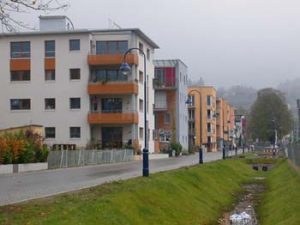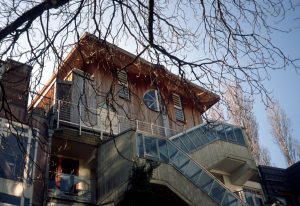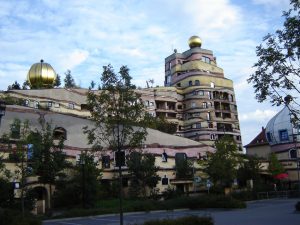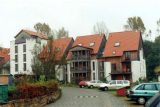On 18 June 2020, the German Bundestag passed the Building Energy Act (GEG) in its third reading. With this law, the federal government is combining the existing requirements of the Energy Saving Ordinance (EnEV), the Renewable Energies Heat Act (EEWärmeG) and the Energy Saving Act (EnEG). For the information programme Zukunft Altbau (Future of Old Buildings), which is supported by the Baden-Württemberg Ministry of the Environment, the specifications of the new law are not ambitious enough. To bring climate-friendly building and renovation nationwide on the way is not possible in the future. "The legislator has missed it to introduce more demanding standards," says Frank Hettler of Zukunft Altbau. "For a sustainable building stock in Germany, however, these are urgently needed to achieve the climate targets." The GEG will now be forwarded to the Bundesrat, which, however, does not require approval, and is expected to come into force by the end of the year.
The Building Energy Act brings together the previously inconsistent specifications for energy requirements for existing buildings and new buildings as well as the use of renewable energies. "Unfortunately, the opportunity to simplify, reduce bureaucracy and take climate policy necessities into account is not being seized," criticises Hettler. "With the GEG, almost nothing changes for building owners. This is a problem: the climate policy goals of the federal government and the EU, as well as the Paris Climate Agreement of the UN, cannot be achieved in this way. The goals for the building sector defined by the federal government in the Climate Protection Plan 2050 will be missed with the legal requirements if those willing to renovate are guided by them."
Important course missed
If Germany wants to achieve the climate protection targets it has set itself, new buildings and refurbishments must be significantly better in terms of energy than the GEG requires. Otherwise, in addition to the necessary purchase of CO2 certificates and high compensation payments to more exemplary EU neighbouring countries, there is also the threat of decades of lock-in effects. After all, once insufficient insulation thicknesses have been installed, they can no longer be improved economically. Buildings constructed or refurbished in accordance with legal requirements would therefore have to be refurbished again at a disproportionately early stage in order to meet future standards and climate protection requirements. If, on the other hand, they are not refurbished, this means high long-term expenses for the owners in the form of energy costs and CO2 pricing.
In accordance with European law, the next review of the GEG will not take place until 2023, when the energy standards for residential and non-residential buildings are to be further developed. In plain language, this is a further delay of several years. These long, unused periods of time, combined with the minimum standards that have been set too low - especially for renovations - are far from adequate for the building sector to make an appropriate contribution to averting the climate crisis.
Better promotion provides important support
Building owners should therefore not only adhere to the GEG specifications, but also tackle new construction and renovation with an eye to the future, recommends Hettler. The financial subsidies that have been greatly improved since this year, for example from the KfW development bank, are helpful in this respect. As a rule, they compensate for the additional costs incurred for construction measures on the building envelope. Since the beginning of the year, the Federal Office of Economics and Export Control (BAFA) has been awarding extensive financial subsidies for the replacement of heating systems - especially existing oil heating systems - if renewable energies are used and legal standards are exceeded.
Conclusion: Those who rely on ambitious, individually tailored energy concepts will save money in the long run - and also protect the climate, advises Hettler. In accordance with this requirement, it is advisable to use at least the KfW Efficiency House Standard (EH) 40 as a basis for new buildings and at least EH 55 as a standard for extensive renovations. To simplify the integration of local renewable energy sources such as geothermal or solar thermal energy, it is also advisable to switch to low-temperature heating systems - provided there are no restrictions such as listed buildings.
Neutral information to questions approximately around the energetic reorganization gives it also free of charge at the consulting telephone of future old building under 08000 12 33 33 (Monday to Friday from 9 to 13 o'clock) or by E-Mail to consultingphone(at)zukunftaltbau.de.
Up-to-date information on the energy-efficient refurbishment of residential buildings is also available at
www.zukunftaltbau.de
Background
Zukunft Altbau provides neutral information to home and building owners about the benefits of energy-efficient renovation and promotes qualified and holistic building energy advice. The information programme, which is funded by the Baden-Württemberg Ministry for the Environment, Climate and Energy Management, provides neutral, interdisciplinary and free advice. Zukunft Altbau is based in Stuttgart and is implemented by KEA Klimaschutz- und Energieagentur Baden-Württemberg.
Keywords:
Stock, DE-News, Quarters, Settlements, Environmental policy, Housing, Housing policy













 From 1 January 2021, climate-damaging fossil fuels will be subject to a price of 25 euros per tonne of CO2 is proven. This means that oil and diesel will become more expensive by 7.9 cents per litre, petrol by 7 cents per litre and natural gas by 0.6 cents per kilowatt hour. Citizens will be relieved of the additional costs, among other things, by a reduction in the price of electricity. The amendment, which had already been passed by the Bundestag on Thursday, also passed the Bundesrat today. The Fuel Emission Trading Act (BEHG) is designed to reduce CO2-price in the form of national certificate trading for the heating and transport sectors.
From 1 January 2021, climate-damaging fossil fuels will be subject to a price of 25 euros per tonne of CO2 is proven. This means that oil and diesel will become more expensive by 7.9 cents per litre, petrol by 7 cents per litre and natural gas by 0.6 cents per kilowatt hour. Citizens will be relieved of the additional costs, among other things, by a reduction in the price of electricity. The amendment, which had already been passed by the Bundestag on Thursday, also passed the Bundesrat today. The Fuel Emission Trading Act (BEHG) is designed to reduce CO2-price in the form of national certificate trading for the heating and transport sectors.